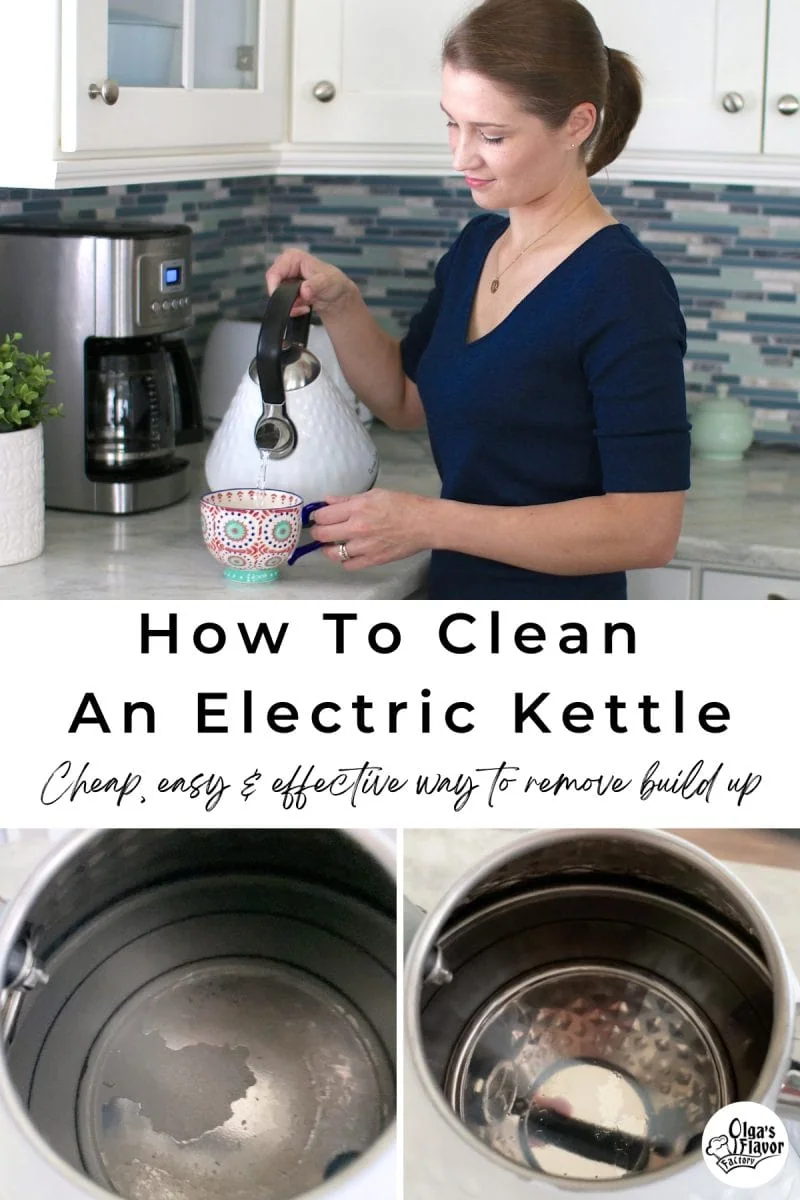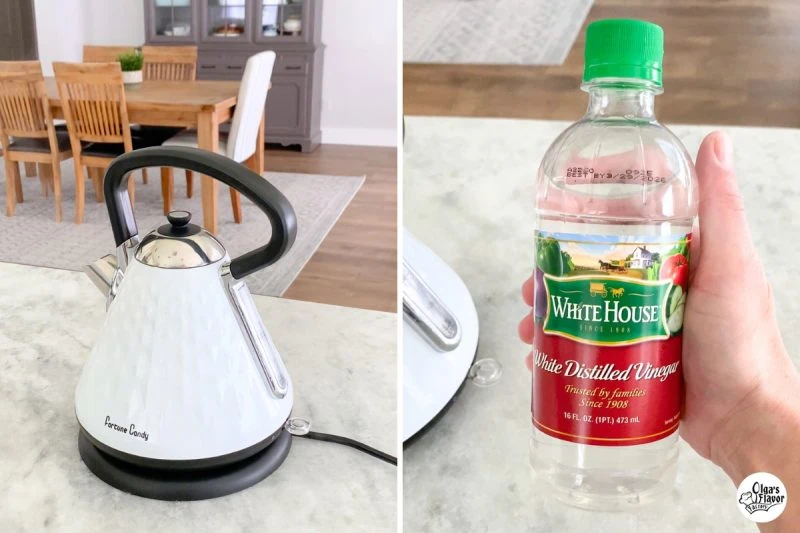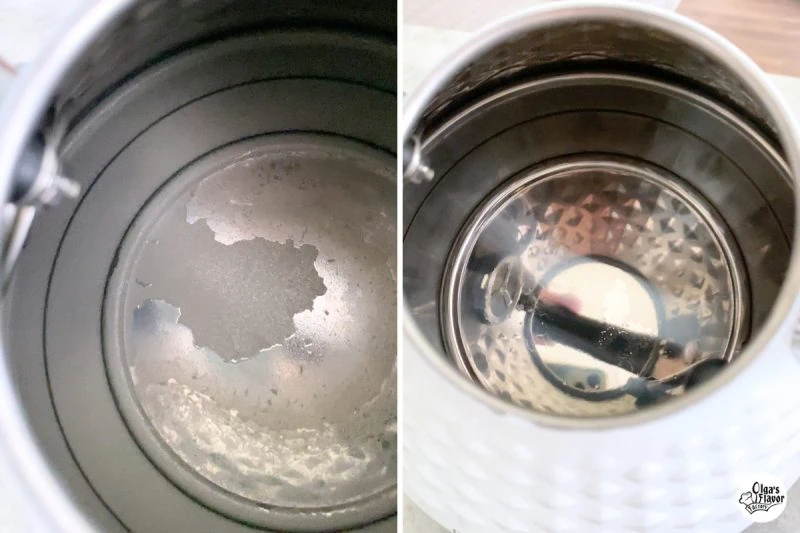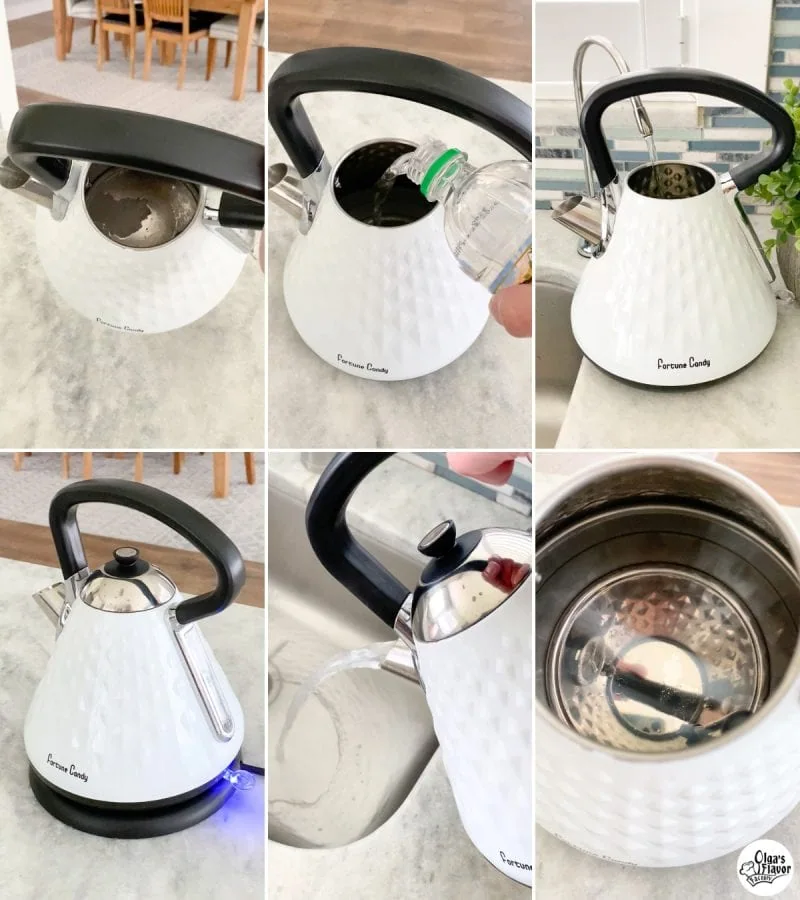How To Clean an Electric Kettle
This simple, cheap and effective method will quickly remove buildup and restore your electric kettle to a sparkling clean condition in just a few easy steps.

If you use an electric kettle or a stove-top kettle for boiling water, you may have noticed some white, chalky residue building up inside over time. It’s totally normal and happens because of the minerals in the water that are left behind when you boil it. The frequency and amount of buildup depend on how often you use the kettle and the hardness of your water.
The good news is that cleaning the kettle is super easy! My mom taught me this method years ago, and it’s been my go-to ever since. All you need is some cheap distilled white vinegar and water. This method works like a charm not only for electric kettles but also for stovetop kettles and coffee makers.
Vinegar is an awesome natural cleaner for many household items. You can also use lemon juice instead of vinegar, but I’d rather save my lemons for some Homemade Lemonade or countless other delicious recipes.
I love this method because it’s so easy and you don’t need to do any scrubbing or use harsh chemicals.
What you need:
- Electric kettle (this method works just as well on a stovetop kettle)
- Distilled white vinegar
- water

What is the white residue on the inside of a kettle?
Frequent use of a kettle to boil water often leads to the accumulation of a white, chalky residue on the interior. I use my water kettle all the time, most often to make tea but also whenever I need boiling water for cooking. It’s so much faster to use an electric kettle than to boil water on the stove.
Water that contains high concentrations of minerals like calcium, magnesium, and carbonates is classified as “hard water.” If you have this type of water, your kettle will get more build up. Another factor that affects the amount and rate of buildup in your water kettle is how often your use your kettle. The more often you use it, the more build it it will have and if you use it only occasionally, you might not have much build up at all.
Is the Limescale Inside the Kettle Harmful?
This white residue will first build up on the inside of the kettle. As the buildup thickens, the water becomes cloudy and floating white particles appear as the residue breaks off into your tea. Even though it’s harmless, it’s definitely unappetizing and may also affect the taste of the water too.
Also, the scale buildup forces the kettle to work harder, potentially causing it to break down prematurely. Regularly cleaning the kettle can help extend its lifespan, so this cheap and easy way to clean it will save you money too.

Video of how to clean an electric kettle
How to clean your electric kettle
- Pour in 1/3 – ½ of your kettle’s maximum capacity with vinegar.
- My kettle holds 1.7 liters of water, which is approximately 7 cups of water. If you divide 7 by 3, that will be a little over 2 cups (2.3). It doesn’t have to be exact; I just eyeball it.
- If you have a lot of limescale, you can fill up half of the kettle with vinegar.
- Then, fill up the rest of the kettle with water. (In my case, approximately 4.7-4.5 cups of water.)
- Do NOT fill up the kettle past the maximum fill line. If you overfill it, the water+vinegar will overflow and you’ll have a mess. Overflowing boiling water is very dangerous.
- If you’ve never done this before, start with less than the maximum capacity.
- Bring it all to a boil.
- You can let the water+vinegar mixture sit for 15 minutes first, then boil, if your kettle has a lot of residue.
- Pour out the water and your kettle will be sparkling clean again.
- If your kettle has a lot of build up, you may have to repeat this process a few times.
- Once it’s clean, just boil some fresh water and discard it to get rid of any vinegar taste.
- After your kettle is clean again and all the build up is gone, pour in more water up to the max line and boil it one more time. Discard the water.

How often do you need to clean your kettle?
This all depends on how often you use your kettle and the hardness of your water. If you notice any buildup or scale accumulating inside the kettle, use the following cleaning method. Cleaning your kettle regularly will make the process easier over time.

Olga
Citric acid (лимонная кислота) is so much better than vinegar! You should really try and see the difference! Just add .5-1 tsp of citric acid to full kettle and let it boil! And there is no vinegar smell!
olgak7
Thank you for sharing. Citric acid isn’t something I keep on hand, but if I ever buy it, I’ll give it a try.